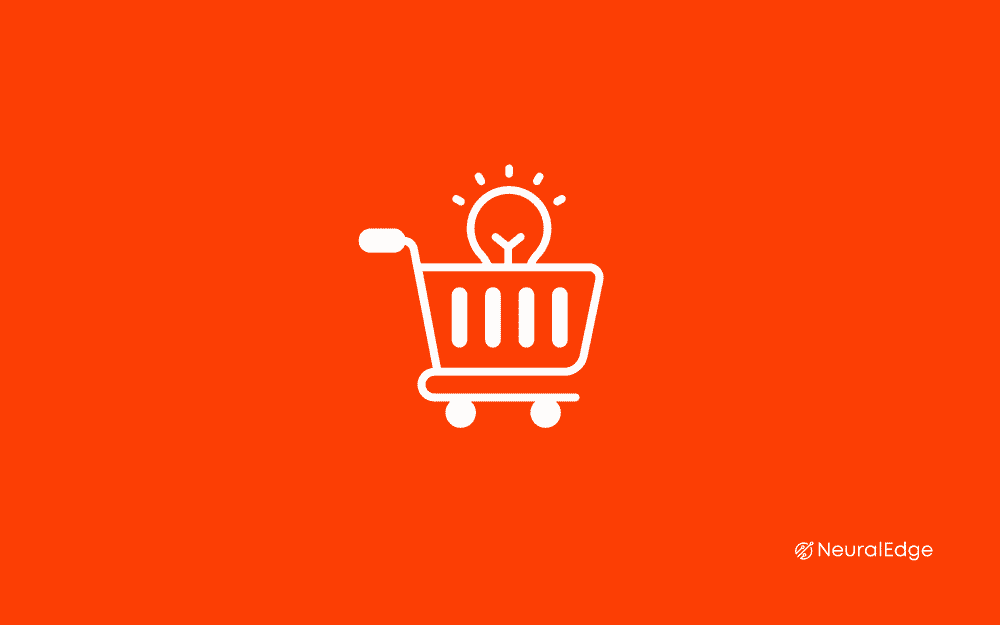In 2019 UK consumers spent £105 billion pounds shopping online. The UK was ranked number three, behind China and the US in a list of countries ranked by consumer eCommerce spend. If you’re not in the eCommerce game by now you’re missing out!
This post addresses some basic principles behind growing a successful eCommerce website. Whether you need to revamp or reignite your underperforming eCommerce channel, get up to speed on the latest eCommerce trends or plan to launch your first online store these tips will set you up for eCommerce success.
Strategic Planning = eCommerce Growth
Building a successful eCommerce website takes time. Activities like choosing the right platform, designing and building a site and writing comprehensive terms and conditions and important to get right but can feel like they take an age.
Planning too can often feel like an unnecessary roadblock for a lot of businesses. We need to do eCom and we need to do it now is a common attitude. However, planning is a critical piece of the puzzle that will ensure recurring eCommerce growth.
Internal and external audits will influence a marketing plan and knowing what they are is a key competitive advantage. The outcome will be a site that generates great ROI and a better shopping experience than your competitors. Creating engaging and original marketing campaigns also plays a big part in eCommerce success.
One simple way to create a robust plan is to use a fundamental marketing framework called the 4P’s. These are product, price, place and promotion. We’ll take you through each of these and will explain their relationship to eCommerce success.

Product
At the very core of your website will be your products. It’s important to note that ‘product’ is more than just the physical product or service that you sell. It covers a myriad of factors that contribute to the final product which could include:
- Packaging
- Labelling
- Branding
- After sales service
- Warranties and guarantees
A great way to understand the elements that make up a product is by using Kotler’s Three Product Levels. This was developed in the 1960s and has since grown to five levels of product. The levels include the core product, the generic product, the expected product, the augmented product and the potential product.
Understanding this is important because it will help you to identify in which areas you can create a USP.
Analysing competitors may highlight that although you sell similar products, for example, women’s sports shoes, no one is offering additional services like free returns or customisation. It’s here that you can begin to develop strategies to capture market share by standing out and offering a better overall product.
Product Range
One important element to consider is product range. You don’t need thousands of products to be successful, they just need to be the right products. In fact, having too many products can cause buyers to be overwhelmed and leave without making a purchase.
Every new product added to your mix should be done so from a customer perspective. A great way to increase average order value is to stock complimentary products on your website. Some retailers are going as far as creating their own marketplaces which includes complimentary products from other suppliers.
If you sell phones, add phone cases and chargers. If you sell guitars, add strings and straps. Sometimes adding these types of products to your range will deliver better results than simply stocking more variations of the same product.
Product Quality
Marketing is concerned with a strategic, long-term view. This means keeping customers coming back is essential. If you’re selling cheap products that don’t deliver on customer needs this is a problem. It is likely to be the start of the end for your eCommerce website.
You need to build a solid customer base that will return to your site and buy time and time again. There are many tactics you can use to bring customers back including email marketing. However, your products have to be worth coming back for.
Product quality will also have an impact on your pricing. It can help to make a USP for your brand. During your research, you may have identified that there is a gap in the market for a higher quality product.
Not only will this help you to win customers from competitors, you might also be able to charge a higher price and position yourself as a premium brand to differentiate yourself.
Product Information and Pictures
It is so crucial that your eCommerce website has the correct and up to date product information. All your hard work creating and choosing products will be undone instantly if your information isn’t up to scratch. This is something you should be looking at before your site even goes live.
Product information is so important because it is all customers have to go on when shopping online. If you miss crucial information like sizing and dimensions and colours then customers will go elsewhere to find a website that has the correct information.
It’s for this reason that product information is considered a key USP when doing competitor analysis.
Similarly, product pictures are the only visual reference customers may have. If you don’t have product pictures then you are definitely losing customers. No doubt about it. Keeping this information up to date will also help you to reduce eCommerce return rates.
When customers have the correct and up to date information, they are less likely to return a product.

Price
To put it simply, marketing is an exchange and a two-way process. As well as you being able to make a profit by being selling your products with a good margin, customers must also be gaining value.
If your products are priced at a luxury price point, for example, all elements of the product and the customer journey must live up to that. You will get a very different experience all-around if you are buying a used car from a local garage to if you’re buying a brand-new Maserati from a dealer.
The price of your products is therefore a key factor in building a successful eCommerce website. There are a number of different strategies that you can use to define your pricing. A few strategies are outlined below.
Pricing Strategy
Choosing a pricing strategy isn’t easy. There a many different factors that influence pricing and it may be the case that pricing changes over time with demand. It may take you some time to finally settle on the right price for your products or service.
To help you decide here are some pricing strategies you can begin to explore.
- Competitor based pricing – this is where you choose to base the price of your products on what’s already in the market I.e. what your competitors are selling for.
- Cost Plus – Here you take the cost of producing your product and add a margin on top. For example, you may make a speaker for £100 and choose to add a £100 margin on top, making the price £200.
- Dynamic Pricing – This takes into account demand for a product or service and the price fluctuates over time in relation to demand.
- Freemium – Very popular with apps and games, freemium offers a basic version for free with the option of buying an upgraded version with extra features.
- Skimming – Skimming is where companies enter the market at the highest possible price before lowering it when demand drops. This is often the case with tech like smartphones and TV’s.
- Penetration – This is the opposite of skimming. Companies will enter the market at a rock bottom price to gain attention and to draw customers away from competitors.
There are other pricing strategies that you can research. Startups.co.uk have a great article that covers these plus more. Much will depend on the product or service that you offer.
It may be the case that a new innovative pricing strategy could give you a USP and help you to stand out in the market.

Place
The place element of the marketing mix is concerned with how your customers will access your products. You should have conducted some market research which tells you when and where your customers like to shop and what their habits are. Having this insight will help you to make better, customer-focused decisions.
If you have an eCommerce website then it is likely your customers are used to shopping online for your particular product or service. However, there may be other sales channels open to you such as marketplaces.
Selling through online marketplaces can be a great way to reach new customer segments and increase your sales with very little effort.
Website Design
If your brand is a pure digital player then the only interaction your customer may have with you is through the internet.
Brands with physical locations spend billions every year ensuring that their shops deliver an exceptional customer experience. This should be no different for brands selling online. Your eCommerce website is a key touchpoint in the customer experience.
There are lots of different platforms on which you can create a website such as BigCommerce and Shopify. These allow you to create a website that is mobile friendly and they are fairly easy to use.
If you want something more bespoke then you can look for a website designer to help you create something unique to your brand.
When you are first looking at website design there are some key factors that you need to consider:
- Page loading speed
- Ease of use on mobile
- Colours and branding
- Customer journey to the checkout
- Platform on which it’s built
Nailing Conversion Rates
Following on from website design you will want to be tracking some key metrics that tell you how your site is performing. Sessions, AOV and conversion rate are all great metrics to use to begin with.
Once your site is established you can look to start improving on these. One key area you should focus on is increasing website conversions.
If you are driving lots of people to your website that’s great. The real question is, are they purchasing? The conversion rate will help to answer this question. If you identify that you need to increase your conversion rate here are 5 tips you can try first:
- Check your website load speed
- Ensure your product information is complete and up to date
- Set-up abandonment email campaigns
- Re-evaluate your marketing and be laser focused
- Review the customer journey of your website and look for problem areas and pages
Customer Locations – International Websites
If you are a global brand then you may need to consider setting up multiple eCommerce websites for customers in different countries. Different languages and translations may be required to ensure you are delivering high quality and personalised service. Platforms like Magento are set up to allow brands to do this.
In the back-end, this can be difficult to manage with your products. Using software like a PIM will help because you can manage all of your core product information in one system. You can then create different translations for different sites and publish the information to each site individually. This localisation is another way to develop a USP over competitors.
This was identified as a key trend in The 2022 eCommerce Trends Report.

Promotion
So, you’ve got your website up and live, what next? You should have a comprehensive marketing plan in place that will tell you how you are going to attract customers to your eCommerce website.
Much like the research for the ‘place’ element, you need to research ‘promotion’ too. Understanding things like the media your target audience consume and the websites they spend their time on will help you to reduce your marketing budget. This is because everything you do will be highly targeted and effective.
There are hundreds of different ways you can promote your website. Some are paid for and some are absolutely free. The right channels will be determined by the ones you identify in your research. These are some tactics that will help you to get started quickly and cheaply.
SEO
Search engine optimization best practices should be applied to almost every page on your website.
Ensuring you have the correct titles and tags is a great start. From there you should be reviewing the content on your pages to check you are targeting the correct keywords and things like image sizes.
In eCommerce especially, SEO can play a crucial role in the success of your site. If you can get a few of your pages ranking well for long-tail search terms you will be capturing people who are in buying mode.
There are three different types of SEO which are on-site, off-site and technical SEO. Intechnic have put together this guide on SEO for beginners that will help you to build a site that ranks well.
It may be beneficial to speak with a content marketing & SEO consultant to get a full picture on your site’s health.
Paid Advertising
There are many different forms of paid advertising that you can use to drive sales on your eCommerce website.
Many people think of Google AdWords straight away which is probably the most popular advertising platform to use. The great thing about AdWords is that you can use a range of ads. The Google network covers search, display and video so you are likely to find a channel the reaches customers.
As well as AdWords you can use social media platforms for paid advertising. Facebook is a great platform because you can be so granular with the targeting options. If you want to reach male fitness lovers aged 30-45 that live in a radius of 5 miles of central London who also love dogs, Netflix and Thai food, you can! It really is that specific.
Offline advertising is of course also an option. It can be difficult to measure results with offline advertising, however; it can be done. This is one of the reasons that digital advertising is so popular. Every click and every purchase can be measured so you can calculate ROAS and report on the results.
Social Media
Having a great social media strategy will help to build your brand and drive engagement. Over time if you keep posting highly valuable content people will start to notice and visit your site.
The great thing about social media for businesses is that it’s free (for now!). Anyone can create an account and get going.
One of the key ways to be successful on social media is to be consistent. If you can only post three times a week try and do it three times a week.
You should also be consistent with the content you post. You should mix the media using text, videos and photos but try and make sure everything is ‘on brand’ and that all of your posts support your overall brand story.
Buildfire shared their tips in a recent article on social media tips for small to medium-sized businesses.
Blogging and Content
To help with your SEO efforts you should have a dedicated blog on your eCommerce website. This will help to serve two purposes.
Firstly, it will help you to get more pages ranking in Google and drive more organic traffic. Don’t think that your eCommerce site is limited to product and category pages. Blog posts are just as useful at driving targeted traffic to your site.
Secondly valuable content marketing will help to build trust and authority with your customers. Content that helps them make a better-informed purchase decision such as ‘what to look for when buying running shoes’ or ‘what’s the best smartphone under £500’ will make customers more inclined to buy from you and will help you build strong relationships.
Conclusion
There are many different elements that go into building a successful eCommerce website. Using a marketing framework like the 4P’s helps to give clarity on areas that need focus. You should also refer back to the objectives and tactics in your marketing plan document.
It’s important that product, price place and promotion are taken into account. Neglecting to find a balance can lead to unsuccessful eCommerce trading.
Once you have built a strategy you can focus on specifics such as the platform your website will be built on. You can also consider the sales channels to use and the promotional mix you will implement.





